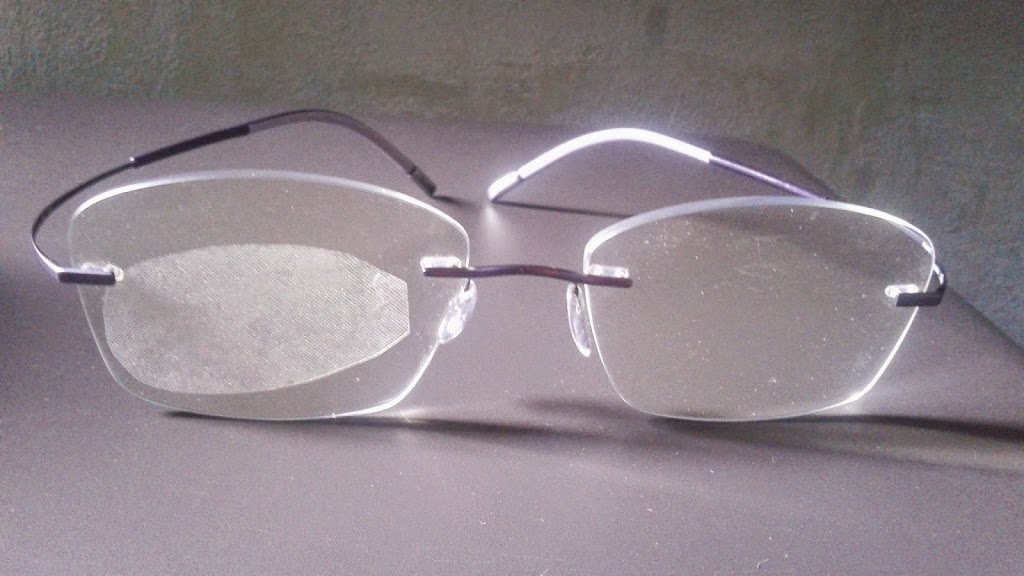
Some of my current home based VT activities
Everything we do or don’t do has neurological consequences. That’s why everything we do or don’t do matters.
It’s important to note that these activities are not suitable for every VT patient. Nor are they suitable at any stage in the rehabilitation process. They are suitable for me because my ability to control my eyes has reached a level allowing me to handle these activities without imploding, albeit with appropriate rest. Getting to this stage has taken a long time. I’ve had to do a lot of boring ground work first. Expanding the range of ocular movements, improving saccades, tracking and so on. VT is an active form of patience.
1. Bar reading or, when more tired, listening to a text with TextAloud while tracking the words with my eyes. Even without suppression controls, I know when I’m doing it right when the text doesn’t go double. The audio support while reading brings some relieve to my vision while still being able to practice saccades and integrate vision, audio and reading comprehension. Over time I feel like the saccades become easier and the audio support is less necessary. I’m gradually inserting prism and spherical flippers into the process to keep it challenging. So far however, (bar) reading hasn’t been particularly easy yet.
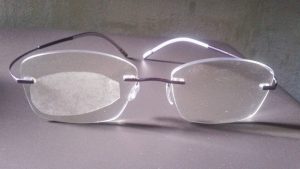
3. When having to rest, meaning I just want to stare, I sometimes watch some kind of series or movie. When I’m up for it I use the flippers while watching. It’s less tiresome than using them while reading because the eyes are more stationary. In fact, the spherical flippers help to relax my eyes when they are all tensed up. It’s like stretching soar muscles.
When watching I also like to put a finger (or a remote) in front of my face. If I see two of them I am sure I’m not suppressing part of the view. (physiological diplopia)
4. Head turns. My Vestibulo-Ocular Reflex hasn’t been working properly for a long time. This means that when my head moved, my eyes didn’t make the appropriate compensatory movements to maintain a stable world view. This year (my 4th VT year) this has finally been leveling out and my eyes do make the appropriate movements for the world to stay fixed and stable. This new and highly anticipated skill isn’t entirely reliable as it often gives way when I get tired. That’s why I often check up on it and train it for short intervals by making head turns. My VOR needs further refinement, integration and staying power.
5. Anaglyphs: I play with these cards or other anaglyph visuals when I feel like it. Lately it’s more fun because I can figure out the DEPTH in them by using my hand and physiological diplopia as a reference. It helps the learning process of corelating eye posture, image disparity and distance. The needed information is being picked up by my brain but I need to further automate these inferences. In the VT office we also use vectograms.
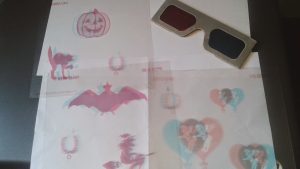
8. Yoked prisms. These powerful prisms, used with bases to one side, shift your entire visual field to the direction of your choice. The lenses are adjustable. I use them bases up, down, left and right. By doing so I train internal adjustment to new visual circumstances. More specifically they stress test the brain’s ability to ajust its egocentric localization, eye and body posture as well as sense of balance and spatial vision. I have found them very useful in terms of aligning my subjectively perceived and objective midline which is often an issue in strabismus patients. Be careful with these toys though. Don’t use them for more than 10 minutes at a time or you might suddenly get licked. They are effective but exhausting. I don’t use them every day either. That said, I’ve had my most ‘unusual’ visual experiences after using yoked prisms.
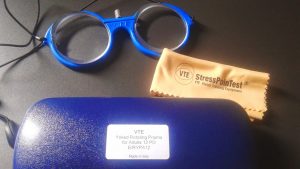
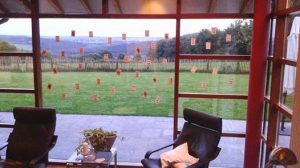
11. Being aware of my left side and using my left hand sometimes. As my left eye is my amblyopic eye, my right brain hemisphere needs fitness. This is almost surely a gross oversimplification but nonetheless trying to become more bilateral is part of becoming more binocular. Eg. if there’s no time pressure I try to use my left hand. My mother told me that before I developed strabismus and amblyopia due to undetected farsightedness at age three, it was very hard for my kindergarden teachers or herself to tell whether I was left or right handed. I was just using either one. Then when I became strabismic the right side heavily dominated things visually and motorically. The chauvinist left hemisphere started hindering the development of my right hemisphere, visually and otherwise. Apparently, as I’m recovering, this is somewhat being reversed. Sometimes when I’m bored I doodle. Yesterday I was doodling with my left hand and noticed I could draw reasonably well with my left hand too. This is new!
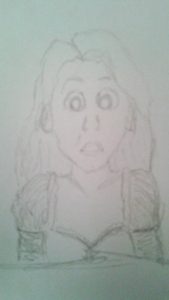 |
| Left hand drawing |
13. Doing somersaults with my eyes open until I get dizzy. Usually three. That’s another Vestibulo-Ocular Reflex integration exercise.Obviously these activities are not exhaustive. There are many ways to combine and load activities according to your current level. I also don’t do all of them every day. Rather, I try to make whatever I’m doing into a visual exercise. If you have some idea how a healthy visual system is supposed to work, you can aspire to that goal. Just as important as what you do, is how you do it. In the end, life is just one big visual exercise!
Aside from exercising, I’m also eating a lot. It appears that I have already reached one of the goals I set for next year. In two to three months I’ve gained 6 kilograms bringing me up to 75kgs. This takes my BMI (height=1,85m) from 19.9 to 21.9. I’d been trying to gain weight for a long time but I guess I’m finally calm enough for it to stick.
I’m mentally preparing myself for the fact that eliminating the residual Convergence Insufficiency and other visual instabilities up to a workable level will likely take another year to year and a half. With some luck and steady work I’ll be an 80kg binocular machine by next year. That reminds me… I need to go eat something!